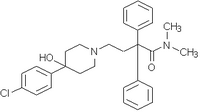Our Consumer Friendly Packaging Survey 2005 asked a national cross section of shoppers to consider packaging friendliness in several ways:
One, by rating and commenting on the friendliness of packaging in 78 product categories.
Two, by rating the friendliness of 15 types of packages.
Three, by rating the friendliness of 30 takeout food by Mona Doyle Contributing Writer and beverage packages at restaurants and convenience stores.
Four, by indicating if, and how often, they experienced 30 kinds of packaging problems during the last year.
Responses indicate that most of today's consumers expect companies to try to respond to their needs and wants. Most are happy when they see responses that indicate caring about what customers think or need. Many switch brands, stores or formats when packages (or customer service offices) are inaccessible and unfriendly. Many depend on friendly packaging to make life easier and help them cope with life in a fast-paced and challenging world. Seeing a package that they recognize as friendly is a way of knowing at once that this package will work for them. Seeing unfriendly-as-ever packages, shoppers are more likely to base their purchase decision on the lowest price they can find.
Respondents scored some packaging features high and some low based on their friendliness scale, or perceived friendliness level.
* Top category ratings for consumer friendly packaging went to liquid soap, bagels and ready-to-eat (pre-cut) fruits.
* For package and closure types, top friendliness ratings went to top-slide zipper closures and plastic jars. The least friendly ratings went to blisters and clamshells.
* Food and beverages got higher friendliness ratings overall than other categories, especially when compared with carded capsules and testing kits.
Many opinions about friendliness were polarized (see "Some polarized opinions of packaging friendliness" above). Friendliness perceptions are in the eyes and fingers of the user. Many consumers love pull-top cans for soup; some hate them. Some consumers love all kinds of zippers; others dislike or hate many of them.
The quality of the package itself, not the design, concerns some consumers. Consumers who experience triggers failing to operate or breaking halfway through use, plastic walls that seem too thin, or sealing parts that seem too shoddy think that many packages are unfriendly and untrustworthy.
Consumers' interest in ease-of-use is endless. Trigger sprays that work are great, but wipes are taking share from triggers because wipes are easier yet.
Red flags and recommendations
Here are nine of the most frequently occurring packaging problems:
1. Opening difficulties. "Do they ever try to open their own packages?"
2. Reclosing difficulties. The intensity is much lower now that easy-to-close packages are commonplace.
3. Too big for contents. Many believe that companies use oversize packages to make people think they are getting more than they actually are. Equally important, having a package perceived as bigger than it has to be is a turnoff for consumers with limited storage space.
4. Tablets/capsules/pills hard to get out of package. Older consumers curse the cotton that tops off many bottles, and groan in frustration with carded capsules that require pushing through foil.
5. Package/label is hard-to-read. The fact that many packages and labels aren't bifocal-friendly restricts quick purchase decisions and impacts sales negatively.
6. Environmentally unfriendly. Environmental packaging prickles are much more widespread than is generally recognized.
7. Contents spoil after opening. The problem is more widespread among households with kids.
8. Package is hard to store. Common causes include height, footprint and need for refrigeration and access.
9. Package not reusable (and should be). Reuse creates good-homemaker feelings of thrift, virtue and environmental responsibility.
The study revealed these additional findings and recommendations:
* Distrust of the information on the label leads consumers to seek and support more government regulation.
* Mess creates work, and some packages create mess. Consumers want to avoid mess and packages that tend to produce it.
* Consumers expect packaging to keep products fresh and feel let down when it doesn't. Confidence in freshness is a key factor in many purchase decisions. Packaging that fails to support that confidence acts as a barrier to sales.
* Exasperation is a common reaction to frustrating packages. "If the national brand is frustrating, I use the store brand because at least it's cheaper."
* Unimproved packaging is seen as evidence that manufacturer doesn't care.
* Consumers stop buying products altogether when the package doesn't work for them or they feel they have really been let down. Packages that work with and for the consumer lead to additional purchases.
* Too many choices can be just as irritating as not enough.
* Illegibility is a serious problem for consumers and impacts sales. Consumers who have trouble reading the label opt not to take a chance on using the product.
* Environmental concerns have been sleeping, but consumers are waking up and beginning to growl again.
* Consumers become enthusiastic and create word-of-mouth advertising for products in packages they like.
* Package safety concerns are barriers to purchase.
The moral of the survey? Friendly packages will help you win consumers and influence their purchases.
by Mona Doyle
Contributing Writer
The author, Mona Doyle, is the CEO of The Consumer Network Inc., an organization that regularly takes the pulse of consumers on packaging issues. She publishes The Shopper Report newsletter. Contact her at 800-291-0100 or Mona@ConsumerNetwork.org.
COPYRIGHT 2005 Stagnito Communications
COPYRIGHT 2005 Gale Group



